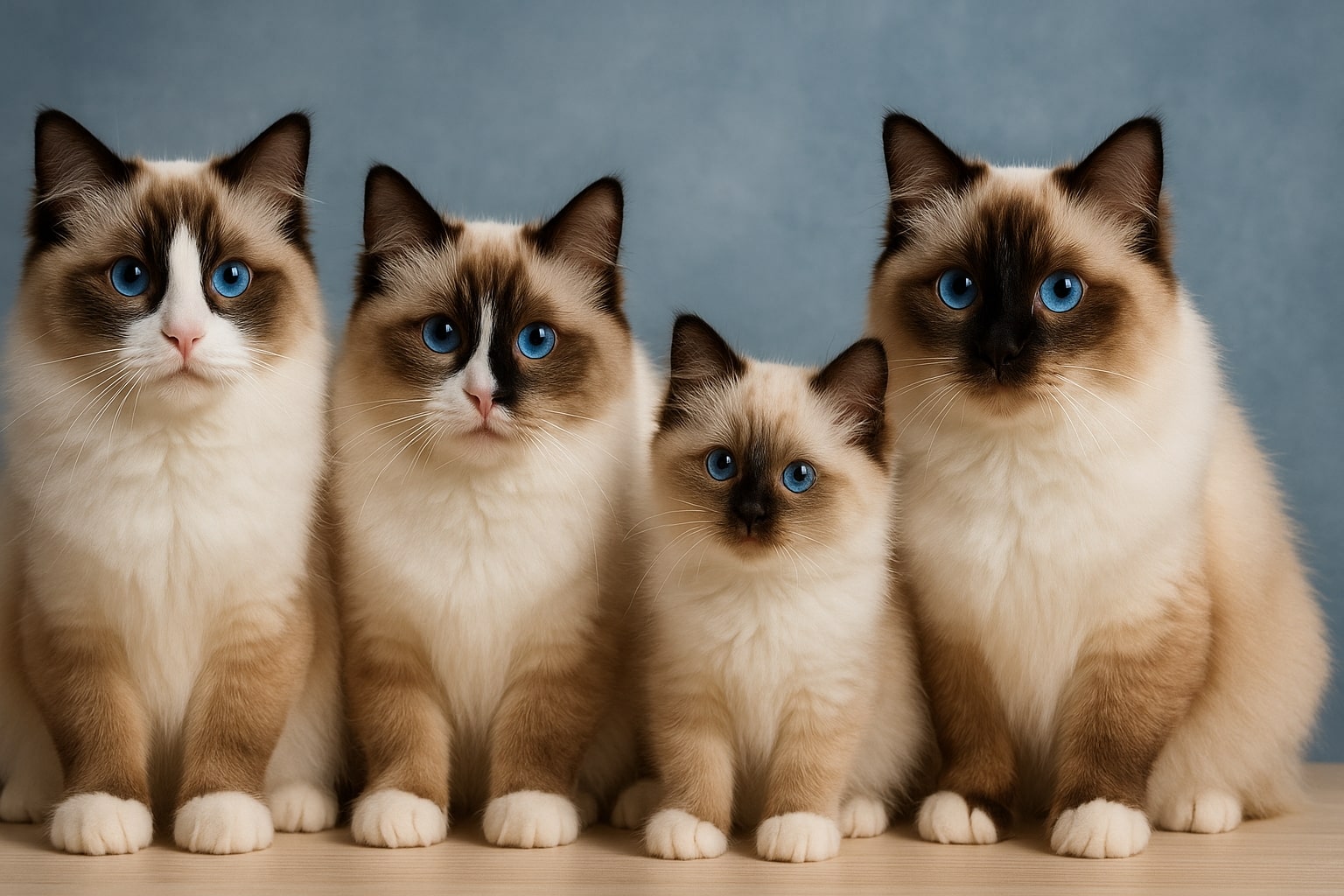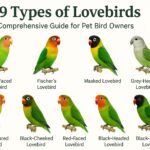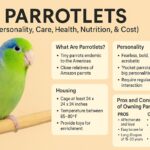Ragdoll cats have captured the hearts of cat lovers worldwide with their striking appearance, gentle temperament, and unique characteristics. Known for their large size, beautiful blue eyes, and tendency to go limp when held, these cats have become increasingly popular pets for families and individuals alike. This article explores everything you need to know about this fascinating breed, from their mysterious origins to proper care techniques.
The Origin and History of Ragdoll Cats
The Ragdoll breed has an interesting beginning that dates back to the early 1960s in Riverside, California. The breed’s development can be traced to a white, longhaired domestic cat named Josephine. According to the most common account, Josephine was owned by Ann Baker, a Persian cat breeder, though some stories suggest she was actually a feral cat living in a colony belonging to Baker’s neighbors, the Pennels.
What makes Josephine’s story particularly notable is that she was reportedly hit by a car, after which Ann Baker took her to the veterinary hospital at the University of California. This is where the story takes an unusual turn. Baker claimed that Josephine was subjected to some form of “government testing” at the hospital, which allegedly altered her genetic makeup and resulted in her becoming extremely relaxed when picked up and seemingly resistant to pain.
While modern science would question these claims about genetic alterations, what is known is that Baker observed that Josephine’s subsequent litters had kittens with notably calm temperaments. Josephine produced two important male cats with different fathers: a black cat called Blackie, and a bicolor cat with cream coloring, dark points, and white mittens named Raggedy Ann Daddy Warbucks (commonly referred to as Daddy Warbucks). These two males are considered the founding fathers of the Ragdoll breed.
Baker developed a careful breeding program using these cats. Daddy Warbucks was bred with one of Blackie’s daughters, resulting in two kittens named Raggedy Ann Tiki and Raggedy Ann Kyoto. Another of Josephine’s daughters, Buckwheat, was also mated with Daddy Warbucks, producing a cat named Fugianna. These four cats – Daddy Warbucks, Tiki, Kyoto, and Fugianna – were registered as the first official Ragdoll cats with the National Cat Fanciers’ Association (NCFA) in 1966, with Daddy Warbucks being registered as number 1.
In 1971, Ann Baker established her own registration organization called the International Ragdoll Cat Association (IRCA) and later, in 1975, she even patented the Ragdoll name. She created a franchise system for breeding stock, imposing strict contracts on breeders. Her vision was to develop cats resembling Daddy Warbucks, particularly his seal mitted pattern with a white nose blaze and white-tipped tail.
The Ragdoll breed made its way to the United Kingdom in 1981, thanks to the efforts of two breeders: Lulu Rowley (of Petil-Lu Cattery) and Pat Brownsell (of Patriarca cattery). Since then, the breed has gained international popularity and recognition from major cat registries worldwide.
Physical Characteristics
Ragdolls are known for their impressive size and gentle appearance. They are one of the largest domesticated cat breeds, with a sturdy, muscular build and long body24.
The typical adult Ragdoll has a height of 9-11 inches (23-28 cm) and a body length of 17-21 inches (43-53 cm). Weight-wise, they range between 8-20 pounds (3.6-9.1 kg), with males generally being larger than females. Due to their slow maturation rate, Ragdolls may not reach their full size until they are around 3-4 years old.
The head of a Ragdoll features a medium-sized skull with a broad, modified wedge shape that gives the appearance of a flat plane between the ears. Their profile shows a gentle break between the eyes and a gentle concave curve with a straight last segment. The muzzle is round and medium in length, with a well-developed chin that aligns with the nose and upper lip. The neck is characteristically short, heavy, and strong.
One of the most distinctive features of Ragdolls is their large, oval blue eyes. According to breed standards, the eyes should be “the bluer the better” across all patterns and colors. These captivating eyes contribute significantly to the breed’s appealing expression.
The ears are medium-sized, broad at the base, with a slight forward tilt and rounded tips. They feature medium furnishings (hair inside the ears) and are set as a continuation of the modified wedge of the head.
The coat is another defining characteristic of the Ragdoll. They have semi-long, silky fur that feels incredibly soft to the touch. Unlike many longhaired breeds, Ragdolls have minimal undercoat, which results in less shedding and matting. Their fur is longer around the neck (forming a ruff), on the back of the legs (forming breeches), and on the underside of the body.
Colors and Patterns
Ragdoll cats come in an impressive variety of colors and patterns, making each cat visually unique. The breed standards recognize several main colors for the “points” (ears, face, paws, and tail).
The traditional colors include:
- Seal: A deep, rich brown color similar to the fur of a seal, this is the most classic and common Ragdoll coloration.
- Blue: Despite the name, blue points are actually a soft gray color that gives Ragdolls a gentle, delicate appearance.
- Chocolate: Lighter than seal, chocolate points resemble milk chocolate and add warmth to the cat’s appearance.
- Lilac: A pale, frosty gray with subtle pink undertones, making it one of the lightest point colors available in Ragdolls.
- Red: Also called flame, this warm, orangey-red color adds a vibrant, sunny quality to the points.
- Cream: A softer version of red, cream points have a pale, creamy color that creates a subtle contrast with the body.
These colors can also appear in tortoiseshell (tortie) or lynx (tabby) variations, adding even more diversity to the breed.
Beyond colors, Ragdolls come in three main pattern types:
- Colorpoint: This pattern features darker coloration only on the points (ears, face, paws, and tail), while the body remains lighter. The body color should be lighter than the point color, with the chest, bib, and chin potentially being even lighter. Soft shadings of the point color may appear on the body.
- Mitted: Mitted Ragdolls have white “mittens” on their paws, often along with a white chin and a white stripe running down their belly. This pattern maintains the colored points on the ears, mask, and tail, creating an appealing contrast.
- Bicolor: The most distinctive pattern, bicolor Ragdolls have an inverted “V” marking on their face, giving them a masked appearance. They also have substantial white on the chest, stomach, and legs.
The combination of these colors and patterns theoretically allows for 120 different color and pattern permutations within the breed, when accounting for pattern variations like High Mitted, Mid-High White, and High White.
All Ragdoll kittens are born white and develop their color points gradually over the first few years of life, with their full color pattern sometimes not fully expressed until they are 2-3 years old.
Temperament and Personality
The Ragdoll earned its name from its tendency to go limp and relaxed when picked up, similar to a child’s ragdoll toy. This distinctive trait is one of the breed’s most endearing qualities and reflects their overall gentle and docile temperament.
Ragdolls are known for being exceptionally calm and affectionate cats. They typically form strong bonds with their human families and are often described as “dog-like” in their loyalty and desire to be near their people. Many Ragdoll owners report that their cats will follow them from room to room, preferring to be where the action is rather than hiding away in quiet corners.
Unlike some more independent cat breeds, Ragdolls tend to enjoy being held and cuddled. They’re typically patient and tolerant, making them excellent companions for families with children or other pets. Their non-aggressive nature means they rarely extend their claws during play, which further adds to their family-friendly reputation.
Contrary to some myths, Ragdolls do feel pain normally – the story about them being pain-resistant due to genetic manipulation is simply not supported by scientific evidence. They are, however, naturally more placid than many other cat breeds, which might make them less reactive to minor discomforts.
Intelligence-wise, Ragdolls are moderately smart and can learn simple commands and tricks, especially when positive reinforcement is used. They aren’t typically as mischievous or hyperactive as some breeds, preferring gentle play and lounging to high-energy antics.
Voice-wise, Ragdolls tend to be quiet cats. They’re not known for excessive meowing, though they will communicate their needs when necessary with soft chirps and gentle meows.
Care Requirements
Despite their luxurious coats, Ragdolls are relatively low-maintenance compared to other long-haired breeds. Their lack of dense undercoat means they shed less and are less prone to matting than many other longhaired cats. Still, regular grooming is important to keep their coat in good condition.
Brushing a Ragdoll’s coat once or twice a week with a steel comb or soft bristle brush is typically sufficient to remove loose hair and prevent tangles. During seasonal changes, more frequent brushing may be needed as they shed their winter or summer coats.
When it comes to diet, Ragdolls benefit from high-quality cat food appropriate for their age, size, and activity level. Given their large size and continued growth until around age four, proper nutrition is particularly important for developing Ragdolls. Consulting with a veterinarian about specific dietary needs is recommended, especially since this breed can be prone to obesity if overfed.
While not as active as some breeds, Ragdolls still need regular exercise to maintain a healthy weight and mental stimulation. Interactive toys, climbing trees, and scheduled play sessions can help keep them physically and mentally fit. Many Ragdolls enjoy retrieving toys, making “fetch” a possible activity for exercise.
Ragdolls are primarily indoor cats. Their trusting nature makes them vulnerable outdoors, as they may not have the street smarts or defensive instincts of other cats. A secure outdoor enclosure or supervised time on a harness and leash can provide safe outdoor experiences.
Litter box maintenance is straightforward with this breed, though their large size means they may need a bigger box than the average cat. Ragdolls are typically fastidious about cleanliness and will avoid dirty litter boxes, so regular cleaning is important.
Health Considerations
The typical lifespan of a Ragdoll cat is about 12-15 years, though with proper care, some may live longer. Like all purebred cats, they have some breed-specific health concerns that potential owners should be aware of.
According to veterinary sources, Ragdolls can be predisposed to certain health conditions, including:
- Hypertrophic cardiomyopathy (HCM) – a form of heart disease that can be genetic in Ragdolls. Responsible breeders screen for this condition.
- Polycystic kidney disease – though less common than in some other breeds, this condition causes cysts to form in the kidneys.
- Bladder stones – Ragdolls may be more prone to developing these painful formations.
- Obesity – their large frame and laid-back nature can make them susceptible to weight gain if diet and exercise aren’t properly managed.
Regular veterinary check-ups are essential for monitoring a Ragdoll’s health, particularly as they age. Annual wellness exams, dental cleanings, and appropriate vaccinations should be part of their healthcare routine.
When selecting a Ragdoll kitten from a breeder, it’s important to choose someone who conducts appropriate health screenings of their breeding stock, particularly for HCM. Responsible breeders will provide health guarantees and documentation of genetic testing.
Choosing a Ragdoll
For those considering adding a Ragdoll to their family, researching reputable breeders is an important first step. Good breeders prioritize health and temperament over appearance alone and will typically allow prospective owners to meet the parents of kittens and see the conditions in which their cats are raised.
Questions to ask potential breeders include:
- What health screenings do they perform on their breeding cats?
- What socialization do the kittens receive?
- What guarantees do they offer regarding health?
- Can they provide references from previous kitten buyers?
Cost is another consideration. Ragdolls from reputable breeders typically cost between $800 to $2,000 or more, depending on color, pattern, and whether the cat is considered pet quality or show quality.
Adoption is another option, as Ragdoll-specific rescue organizations exist in many areas. Adult Ragdolls may become available for adoption due to changes in their owners’ circumstances rather than behavioral issues, given their typically gentle temperament.
Before bringing a Ragdoll home, the living environment should be prepared with appropriate supplies, including a litter box, food and water dishes, scratching posts, comfortable resting areas, and toys. Cat-proofing the home is also important, as curious Ragdolls may investigate cabinets and small spaces.
Living with a Ragdoll
Daily life with a Ragdoll typically involves a lot of companionship. These cats tend to want to be involved in household activities and will often position themselves in central locations where they can observe family life.
Ragdolls generally get along well with children who are taught to handle them gently. Their patient nature and tendency not to scratch make them good family cats. They also typically coexist peacefully with cat-friendly dogs and other cats.
While Ragdolls are adaptable to different living situations, they do best in environments where they receive plenty of interaction and aren’t left alone for extended periods. They form strong attachments to their people and can become lonely if isolated for too long.
For those who travel frequently, consideration should be given to how the Ragdoll will be cared for during absences. Some adjust well to reliable pet sitters, while others may prefer the familiarity of being boarded where they’ve stayed before.
Conclusion
The Ragdoll is a cat breed that offers a wonderful combination of beauty and temperament. Their striking appearance, with large bodies, silky coats, and intense blue eyes, makes them visually appealing, while their gentle, affectionate nature makes them delightful companions.
From their intriguing origins with Ann Baker in 1960s California to their current status as beloved pets worldwide, Ragdolls have maintained their distinctive characteristics through careful breeding. Their variety of colors and patterns means there’s a Ragdoll to suit almost any aesthetic preference.
For families or individuals seeking a cat that will actively participate in household life, form strong bonds, and provide affectionate companionship without high-strung energy or aggression, the Ragdoll offers an excellent option.
Their moderate grooming needs and generally good health make them relatively easy to care for, though their size does require consideration regarding space and supplies.
The “floppy” nature that gives them their name perfectly symbolizes what makes these cats special – they’re relaxed, go-with-the-flow companions who bring a gentle presence to any home lucky enough to have them.
- 9 Types of Lovebirds (A Comprehensive Guide for Pet Bird Owners) - June 20, 2025
- Labrador Retriever: America’s Most Beloved Family Dog - June 9, 2025
- The Complete Guide to Indian Ringneck Parrots - June 9, 2025















